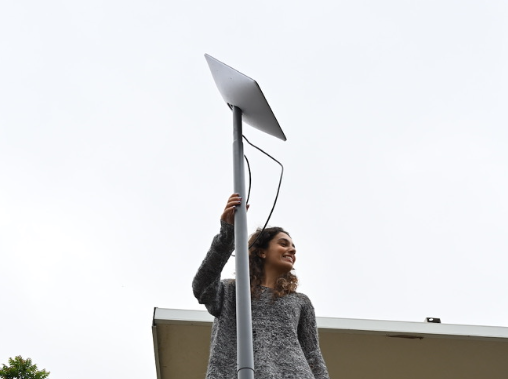
Starlink, the satellite internet service by Elon Musk’s SpaceX, is no ordinary internet provider. It promises to beam high-speed, low-latency internet directly into homes from space, bypassing the traditional infrastructure like mobile towers, fiber-optic cables, and spectrum auctions. As India prepares to welcome this technology, questions are being raised—not just about its economic impact, but also its strategic implications.
Starlink operates a constellation of thousands of small satellites positioned in Low Earth Orbit (LEO), just 550 km above the Earth’s surface. This proximity ensures significantly lower latency compared to traditional satellite services, making it ideal for real-time applications. The setup is simple: a user needs a Starlink dish and a power source—no need for fiber or cellular towers.
The Department of Telecommunications (DoT) in India has issued Starlink a Letter of Intent (LoI) to operate in the country. Final approval from IN-SPACe (Indian National Space Promotion and Authorization Center) is awaited. Once cleared, Starlink will become the third company, after OneWeb and Reliance Jio, to provide satellite internet services in India.
However, Starlink’s entry has sparked resistance from Indian telecom giants like Reliance Jio and Bharti Airtel. These companies argue that Starlink has an unfair advantage. While traditional telecom players have invested billions of rupees in acquiring spectrum through competitive auctions and building infrastructure, Starlink is being allowed to operate by paying just a nominal annual fee—4% of its revenue. This policy, modeled on practices in other countries, eliminates the need for spectrum auctions for satellite internet providers.
This has led to dissatisfaction among Indian telecom operators, who believe that if Starlink is catering to the same user base, it should follow the same regulatory and financial obligations. They emphasize that whether internet is delivered via ground-based networks or from space, the spectrum usage remains similar. The core concern is the survival and profitability of homegrown telecom providers who have heavily invested in infrastructure, including for 5G services.
The Indian government now finds itself at a crossroads—whether to prioritize digital expansion in rural and remote areas through satellite platforms like Starlink or to protect the interests of domestic telecom operators who have supported India’s connectivity backbone for decades. Achieving a balance is crucial, as Starlink’s affordable internet may accelerate digital inclusion but could also destabilize the existing telecom ecosystem.
Beyond economic and regulatory issues, Starlink also raises national security concerns. In recent months, Indian security agencies have seized multiple unauthorized Starlink devices from insurgent groups in Manipur. These devices, reportedly used for communication and discovered alongside weapons and explosives, had not been officially sanctioned for use in India. A similar case occurred in the Andaman Islands where Starlink equipment, smuggled from Myanmar, was found along with illegal drugs.
Elon Musk claimed that Starlink was not active in India and had not begun official service. However, on-ground reports contradicted this, showing functioning devices, thereby questioning how the network could be accessed without formal approval. This opens up concerns about regulatory control, device smuggling, and unauthorized internet usage by non-state actors.
In Myanmar, where internet blackouts are frequent due to government crackdowns, Starlink devices have reportedly become a black-market staple. According to The Myanmar Internet Project, over 3,000 Starlink terminals are in use—many illegally imported and operated. These devices are not only being used by civilians but also by rebel groups and cybercriminals, raising the specter of unregulated digital warfare.
The key advantage of Starlink—easy accessibility and independence from ground infrastructure—is also its biggest vulnerability. Without tight regulatory oversight, such systems can be exploited by insurgents, smugglers, and scammers. In a country like India, where cyber security and geopolitical sensitivities are already under strain, allowing such technology without strict control could pose severe threats.
What Starlink represents is a fundamental shift in global internet architecture. Governments can no longer fully control internet flow by managing land-based infrastructure. The digital reins are slowly shifting into the hands of private players like Elon Musk, who now wield considerable influence over global connectivity.
If used responsibly, Starlink could be a game-changer for rural India, transforming digital education, healthcare, and entrepreneurship. But if misused, it can just as easily become a tool of chaos, amplifying risks in sensitive regions and bypassing regulatory safeguards.
India must now decide how to adopt this dual-edged technology—ensuring its immense potential is realized without compromising national security and the survival of domestic telecom infrastructure.
Disclaimer: This article is based on publicly available information and media reports. It does not imply any judgment or endorsement of any company or technology. The purpose is to inform and present multiple perspectives for public discourse.




